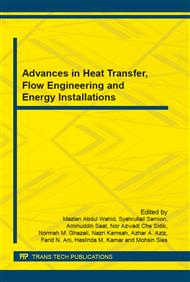p.563
p.569
p.575
p.580
p.585
p.591
p.596
p.601
p.606
Performance Enhancement of Tilt-Body Micro Air Vehicle by Use of Orthotropic Laminated Proprotors
Abstract:
A passive twist control is considered as an adaptive way to maximize the overall efficiency of a proprotor developed for convertible Micro Air Vehicles (MAV). In this paper, adaptation of the proprotor geometry in accordance to flight configurations is achieved by induced twist generated by the inherent structural coupling effect in anisotropic composite material and centrifugal force emanating from the tip load. Beam Finite Element Model based on Rotating Timoshenko Theory is used to predict structural loads, while Blade Element Momentum Theory is employed to predict the aerodynamic performance of adaptive proprotor as applied on Micro Air Vehicles (MAV). The iterative process of combination of aerodynamic model and structural model is used to compute the steady-state deformation of the flexible laminated proprotor blade due aerodynamic loads. Finally, the optimal design of lamina blade material is carried out to investigate the potential of flexible blade in the proprotorperformance enhancement.
Info:
Periodical:
Pages:
585-590
Citation:
Online since:
January 2016
Price:
Сopyright:
© 2016 Trans Tech Publications Ltd. All Rights Reserved
Share:
Citation:


